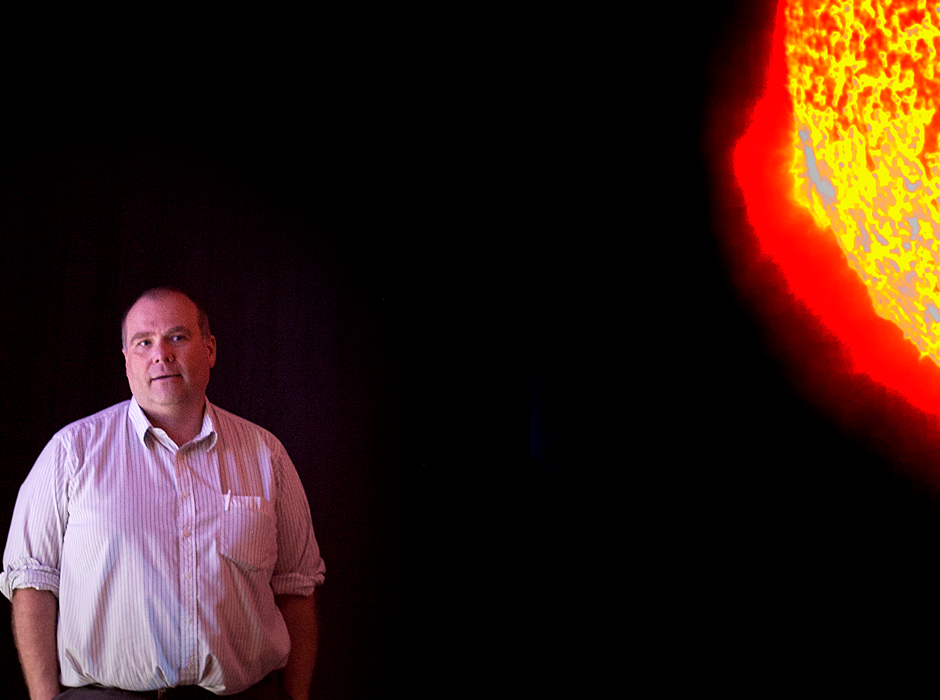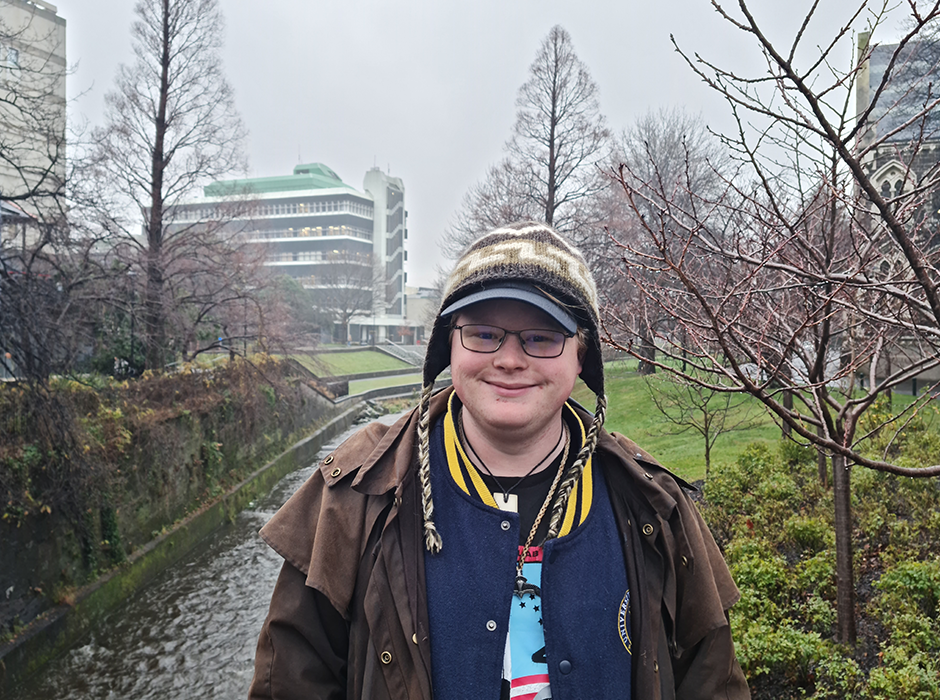
Professor Craig Rodger is one of the lecturers for ASTR101: Introduction to Astronomy, which is now being offered as a semester two paper.
How old is the universe? What are stars made of? Does intelligent life exist out there? If you’ve ever pondered such things, then ASTR101: Introduction to Astronomy could be the paper for you. Laura Hewson talks with Professor Craig Rodger about space and stars, meteors and maths and why exactly he keeps a battleaxe in his office.
In the beginning there was gas, Professor Craig Rodger says. Hot gas and lots of it.
Also in the beginning, though not nearly so long ago, there was a summer school paper called PHSI170, which will be offered for the first time in semester two as ASTR101: Introduction to Astronomy.
The new-ish paper – taught by Craig and Associate Professor Jonathan Squire – will follow the same format as the summer school paper, delivering “tried, true and successful” content while allowing more time and space for contemplation.
There are a few reasons for changing the name of the paper, Craig says.
“The fact that Otago actually had an astronomy paper was sometimes missed so this raises the paper’s visibility. Also, ASTR101 is quite different from most physics courses where we’re trying to teach things that are deeply fundamental and totally ingrained and accepted.
“Astronomy, in contrast, is an active research area where basic stuff keeps changing. We’re constantly tweaking the lecture material to be up-to date with what we currently understand about the universe. It’s exciting.”
Another big difference is that the maths requirements are much lower for ASTR101 than most physics papers, making it more appealing to a wider range of students, Craig says.
“Physics has a bad rap with a lot of students, and part of that is because of its association with maths, but this isn’t actually a course designed for physics students. I designed this paper to be accessible to people of different backgrounds.
“The humanities students can totally function with the level of maths that’s required and the physics students are also pushed a bit by having to write essays, which as a rule they don’t tend to do.”

Fourth-year student CJ Barnes, who is doing a Bachelor of Science (Hons) in physics, took ASTR101 when it was a summer school paper.
Fourth-year student CJ Barnes, who is doing a Bachelor of Science (Hons) in physics, took PHYS170 in 2022 when it was a summer school paper.
“I’d never taken a summer school paper before, but I took this one because I’ve always had an interest in astronomy.”
As a physics student, CJ has written three essays in his entire time at Otago and two were for this paper. He enjoyed the process though and the range of topics made things easier as there was enough choice to appeal to the different students taking the paper.
“For myself, I did essays on the different models of the solar system used throughout time (the geocentric model, the heliocentric model, and the Tychonic model) and the fate of the universe. I found the different models of the solar system and the life cycle of stars to be the most interesting parts of the course, however it’s all very interesting.
“It’s not a math-heavy course and it suits most people because it’s a stand-alone paper that can be slotted in to any degree. And both of the lecturers are incredibly friendly and want to help people succeed in the course, so if you do get stuck on something don't be afraid to ask them.”

So what should students expect when doing ASTR101? According to Craig, it starts off a bit like The Hitchhikers Guide to the Galaxy.
“Lecture one is basically, space is big. Let me tell you about how big space is. Lecture two is, the universe is old. Really old. Let’s talk a little bit about how old it is.
“And then we start talking about the astronomical knowledge of ancient peoples. There’s a lot of history and information about the development of scientific ideas. About a third of the course is on how we used to think the world or universe worked and that we were wrong, and this is how we know we were wrong, and this is how our thinking evolved. The course then turns to how we think things work now.”
There’s the life cycle of stars. Their creation, growth, middle age and ultimate demise.
“Most stars die in a reasonably boring way but some stars – the biggest ones – die as the Russians say ‘with music’. Dramatic. Generally explosions.
“I quite like to lecture with a battle axe for when you kill stars.”
The course also covers meteors in one of the tutorials, going from extreme events like the dinosaur killers to smaller but still “unfun” events like a few years ago in Cheylabinsk, Russia, where a rock came out of space and exploded over the city, Craig says.
“Because Russian drivers are required to have video cameras in their cars for insurance purposes there’s all this footage of this rock and the shining light and the shock wave.
“We can talk about these as risks and what might we do if we found out that we had X years before a meteor hit.”
One of the final topics covered in the course is the search for extraterrestrial intelligence (SETI).
“We have to leave it open to interpretation because we have absolutely no evidence that there’s life outside planet Earth. Though there may be some evidence for Mars – it’s arguable. What we can talk about is how we can use our scientific understanding right now to quantify the probabilities and possibilities of how life might talk to us and how we might search for life on other planets.
“So we sort of start with deep history and ancient peoples and we end with the fate of the universe and aliens. It’s a lot of fun.”
*There’s still time to enrol for ASTR101. More information